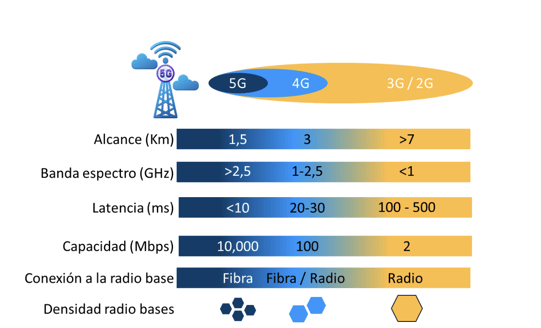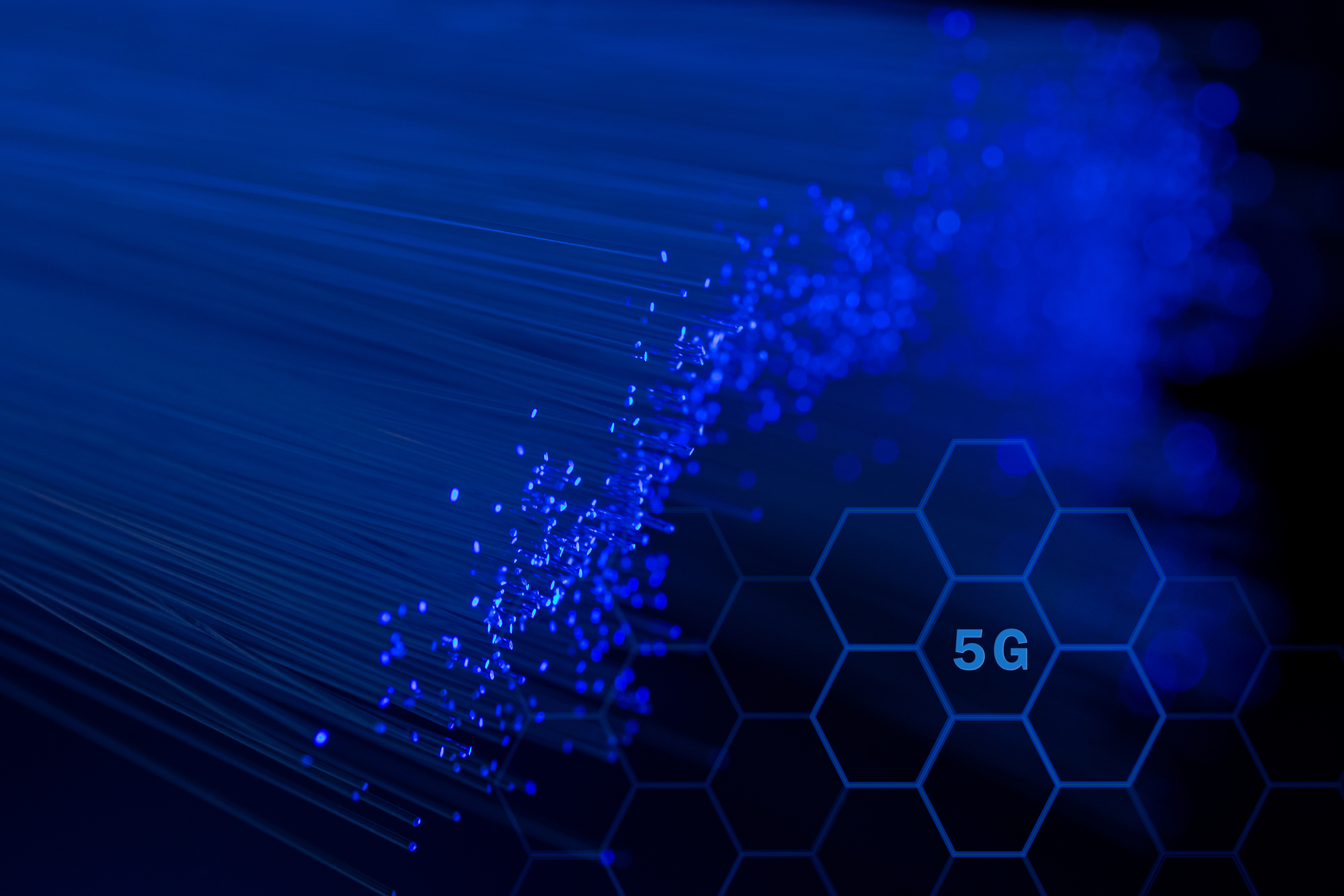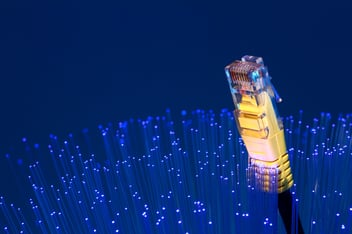Optical Fiber and 5G Networks: Allies in the Quest for Better Connectivity

Jairo A. Guzmán Yermanos
The arrival of 5G technology promises to transform our digital lives, but its success depends largely on the underlying infrastructure.
Here, optical fiber emerges as an essential component, providing the necessary backbone to support the promises of this new technological era.
5G is designed to address the enormous growth in data and connectivity, the Internet of Things (IoT) with millions of connected devices, and innovations such as virtual reality (VR) and augmented reality (AR), and Artificial Intelligence (AI).
It allows for a 100x increase in connection capacity and a 70% decrease in latency, making it ideal for applications involving real-time control.
Below, you can see a comparison of cellular technologies and appreciate the advantages of 5G:
Optical fiber, with its capacity to transmit data at extremely high speeds (it can exceed 40 Tbps), not only improves the efficiency of 5G networks but also enables a revolution in the way we interact with the digital world. Each 5G base station must connect to the operator's core network, preferably through optical fiber, to achieve the speeds and latencies we all expect.
Benefits of Optical Fiber for 5G Connectivity
The collaboration between optical fiber and 5G opens doors to innovations in fields such as augmented reality and virtual reality, offering unprecedented immersive experiences thanks to low latency and high transmission speeds.
This synergy between both technologies powers digital entertainment that also transforms industrial, educational, and healthcare sectors, providing powerful tools for training, production, and medical diagnosis. Ultimately, the alliance between optical fiber and 5G networks emerges as a key catalyst for progress towards a more connected and innovative society.
- Higher Bandwidth
Optical fiber, with its ability to transmit large amounts of data at the speed of light, offers exponentially higher bandwidth compared to previous technologies. This increase in bandwidth is vital for handling the growing volume of data generated by 5G applications, enabling a seamless and uninterrupted user experience.
- Ultra-Low Latency
Latency, or network response time, is significantly reduced with the use of optical fiber. In applications that require nearly instant responses, such as augmented reality, autonomous driving, or online gaming — activities that will see increased demand with 5G connectivity — optical fiber provides a solid foundation for the development and expansion of emerging technologies.
- Reliability and Durability
Unlike copper-based connections, which are susceptible to electromagnetic interference and degrade over time, optical fiber is robust against these adversities. Its immunity to interference and lower susceptibility to wear ensure a more reliable and durable connection, essential for 5G network infrastructure.
- Energy Efficiency
Sustainability is a global imperative, and the energy efficiency of optical fiber stands out in this field. Consuming less energy to transmit data over long distances not only reduces operational costs but also minimizes the environmental impact associated with telecommunications networks.
- Scalability
Optical fiber networks offer unprecedented scalability, allowing for increased data transmission capacity without the need to replace existing infrastructure. This flexibility ensures that the network can adapt and evolve alongside growing data demands and future technological innovations.
- Improved Coverage and New 5G Cell Connections
The deployment of optical fiber significantly improves 5G network coverage, especially in areas where signal transmission is challenging. This is crucial for eliminating connectivity "dead zones," ensuring that more users can enjoy the benefits of 5G regardless of their geographic location.
- Information Security
Data transmission via optical fiber offers a higher level of security. Being immune to electronic eavesdropping and other forms of data interception, optical fiber ensures that transmitted information remains protected, a crucial aspect for critical applications handling sensitive data.
- Implementation and Maintenance
Although the initial implementation of optical fiber can be costly, its long-term advantages far outweigh this initial investment. Low maintenance costs and reduced need for frequent replacements or repairs make optical fiber an economically viable option for the backbone of 5G networks.
Optical fiber is not just another component within 5G network infrastructure; it is a fundamental piece that enables and empowers all the promises of this new technology. Investing in optical fiber is investing in the unlimited potential of a hyperconnected world powered by 5G technology.
Do you want to know what optical fiber can do for your company?

Jairo A. Guzmán Yermanos
Electronic Engineer with more than 20 years of experience, specialized in negotiation and Marketing Management, with experience in sales and marketing management in the telecommunications sector. With skills for product structuring, team building, strategic relationships, and negotiation.
.webp?width=150&height=68&name=Logo%20Espa%C3%B1ol%20Fondos%20Claros%20(1).webp)
.webp?width=130&height=58&name=Logo%20Espa%C3%B1ol%20Fondos%20Claros%20(1).webp)



.jpeg?width=352&name=technology%20company%20(1).jpeg)





.jpeg?width=352&name=Edge%20Computing%20(1).jpeg)
.jpeg?width=352&name=Conexiones%20r%C3%A1pidas%20(1).jpeg)
-1.jpeg?width=352&name=Nodos%20Edge%20(1)-1.jpeg)
.jpeg?width=352&name=Contenidos%20(1).jpeg)
